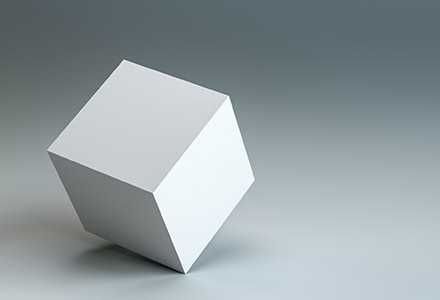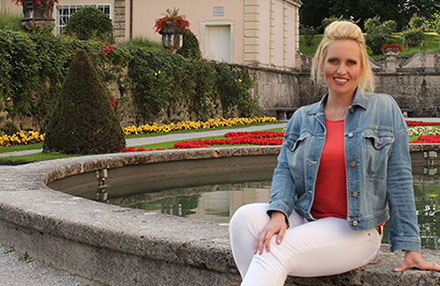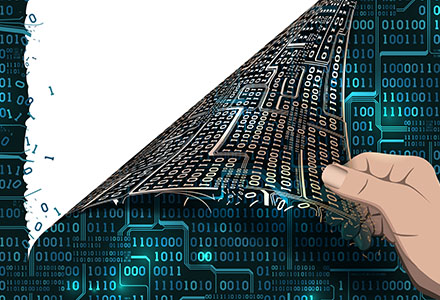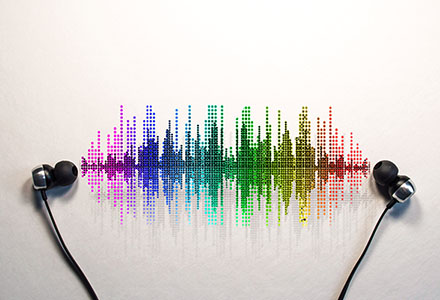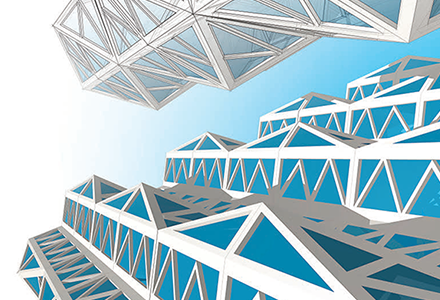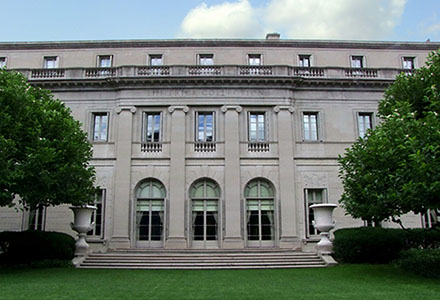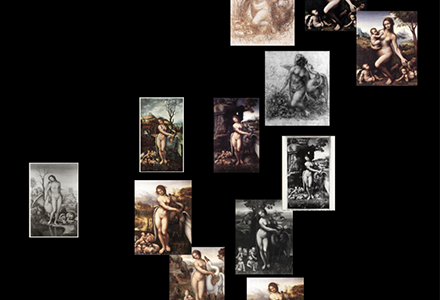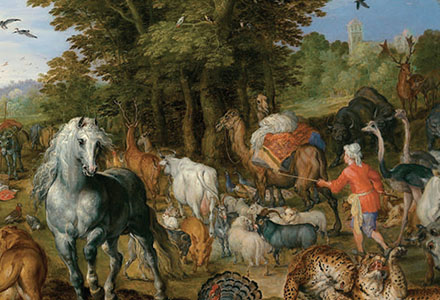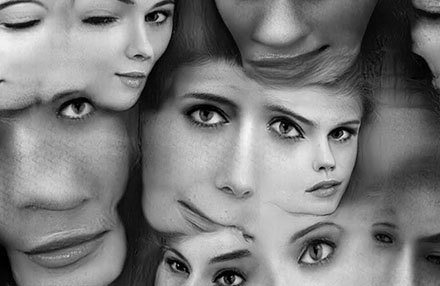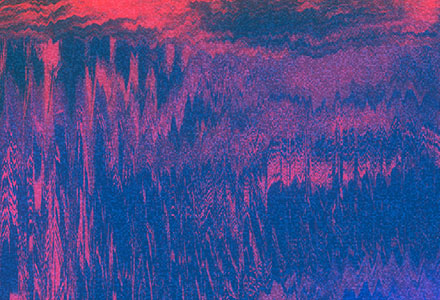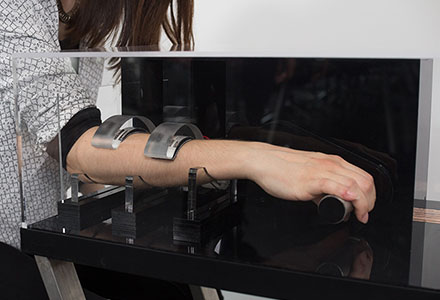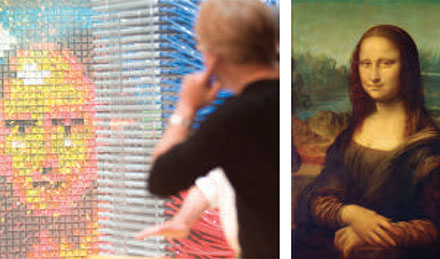Magazine: Spring 2018 | Volume 24, No. 3
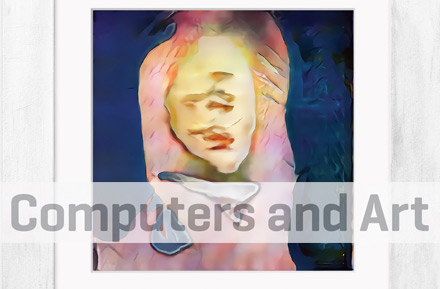
The image featured on the cover of this issue and entitled “Malala” was produced by the AICAN algorithm and was the leading artwork in the exhibition “Unhuman: Art in the Age of AI,”which took place in Los Angeles, California, and Frankfurt, Germany, in the fall of 2017. Created by Ahmed Elgammal, professor of computer science and director of the Art and Artificial Intelligence Laboratory at Rutgers University, AICAN is an algorithm that autonomously generates novel images with deep learning techniques. The algorithm was designed to answer the question, “If we teach a machine how to recognize art and styles of art, and then program it to create new images that do not follow established styles, what would it create?”
Featuring the materialization of 24 AICAN-produced images printed on unframed, metal sheets in two separate installments, “Unhuman” was the result of a selection of images from the digital constellation of visual content fabricated by the algorithm after its exposure to 80,000 digitized reproductions of paintings in Western art. The handpicked images in the exhibition and their presentation as art produced by a machine were intended to interrogate the role of artistic authorship, the concept of creativity, and the meaning of computer-generated art in the age of AI.
While the AICAN images are devoid of artistic intentionality in a direct sense, their ascribed titles, such as “Malala,” are intended to evoke a range of socio-political and conceptual associations in order to question their interpretive capacity. By far the most popular image in the exhibition, “Malala” gained its title in honor of Malala Yousofzai, the human rights activist from Pakistan, who survived being shot by the Taliban while standing up for women’s right to education. The image appears like a sanctified portrait or religious icon, noble, vivid, and strongly anchored in the foreground of the picture plane, making a direct appeal to its viewer despite its otherwise obfuscated rendering.
“Malala” and the other images produced by AICAN may be seen as the ultimate experiment in modernism, pushing the limits of the meaning of form itself, depending on where one locates the dividing line between human and machine agency in the creative act, if at all. At the core of “Unhuman” is an exploration of the role of boundaries in safekeeping those seemingly inimitable qualities that we consider the hallmarks of the human experience. To understand what is human and worth guarding as uniquely human, we ask the reader what is unhuman?
—Emily L. Spratt, Curator of “Unhuman: Art in the Age of AI”
and Chief Curator of the AICAN Art Collection
Download
- Digital Edition web-based magazine available for subscribers – sign in
- PDF via ACM’s Digital Library
DEPARTMENT: Updates
The Hour of Code: An initiative to break the barriers of coding
By Anshuman Majumdar
SECTION: Features
Why architecture and artificial intelligence?
What do architecture and AI have to do with each other? Quite a bit, it turns out, and it is a history that goes back to the origins of AI.
By Molly Wright Steenson
Harnessing technology for art history at the Frick Art Reference Library
The Frick Art Reference Library has been researching the potential of computer technology to enhance the methods art historians have historically used to do their research. The Frick has launched a number of exciting new collaborative projects with the hopes of bringing the normally staid world of art history into the 21st century.
By Louisa Wood Ruby, Samantha Deutch
The Replica Project: Building a visual search engine for art historians
From the time of prehistoric etchings on the walls of the Lascaux cave to the present day, people have always been creating art. With millions of artistic artifacts filling museums, churches, cultural institutions, and private collections across the globe, connecting to our shared cultural and artistic past is no longer impossible.
By Benoit Seguin
The burgeoning computer-art symbiosis
Computers help us understand art. Art helps us teach computers.
By Shiry Ginosar, Xi Shen, Karan Dwivedi, Elizabeth Honig, Mathieu Aubry
Creation, curation, and classification: Mario Klingemann and Emily L. Spratt in conversation
Computer-generated art has long challenged traditional notions of the role of the artist and the curator in the creative process. In the age of machine learning these philosophical conceptions require even further consideration.
By Emily L. Spratt
The visual impact of sound: Glitchometry
Applying sound effects to image files can yield mind-boggling images.
By Daniel Temkin
The story of Aitokaiku: Utilizing artificial intelligence for music
With the growing popularity of streaming services, artificial intelligence-generated systems, and open art content, the music industry is facing a complex set of challenges.
By Jarno Eerola
Rethinking creativity
Why it matters to liberate creativity and how technology can help us along the way.
By Seda Röder
DEPARTMENT: Labz
The next generation of interactive devices
Human Computer Interaction Lab, Hasso Plattner Institute
By Pedro Lopes


